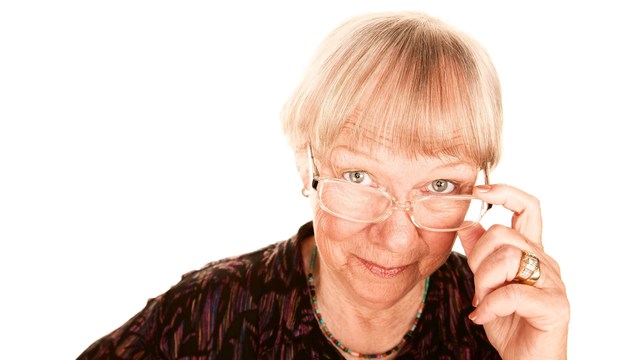FDA Approves In-Eye Telescope for Macular Degeneration
A new product just approved by the U.S. Food and Drug Administration is offering new hope to elderly patients with end-stage age-related macular degeneration (AMD). The implantable, miniature telescope is considered breakthrough technology to help offset the effects of AMD, which results in functional vision loss and is the leading cause of blindness in older Americans.
Anatomy of the eye
Light enters the eye through the lens, which focuses the light onto special cells in the lining of the eye which is called the retina. The portion of the retina that is responsible for seeing up-close vision in clear detail is the macula. Light is converted by the cells in the retina and macula into electrical energy that is sent to the brain through the optic nerve.
AMD defined
During macular degeneration, the cells in the macula are damaged, either by fat deposits that cause scarring (dry AMD) or by extra blood vessels that form in the area and leak fluid into the surrounding tissue which damages the retina (wet AMD). In both types of age-related macular degeneration, the damaged cells in the macula are no longer able to convert light to electrical energy. The pieces of the image that should have been converted by those cells are never sent to the brain, resulting in a black hole in the center of the visual image.
AMD is a progressive condition. Generally, a small “hole” appears in the center of vision and grows larger over time as more cells inside the eye are damaged. The outer edges of the retina, which are responsible for peripheral vision, are usually undamaged, which can result in seeing an image similar to a donut where the edges are visible but blurry and the center or donut hole is missing.
Telescopic vision
Dr. Isaac Lipshitz of VisionCare Ophthalmic Technologies, Inc. developed the new, implantable telescope to combat the effects of AMD. The device consists of an actual telescope the size of a pea. During surgery, the natural lens of the eye is removed and the telescope is inserted into the capsule in the eye where the lens had been located. Light entering the eye is enlarged three times as it passes through the telescope and into the eye. The result is improved vision because the image is larger when it reaches the cells in the retina and macula. The actual damage in the macula cannot be repaired using this procedure. The goal is to help the eye use the healthy parts of the retina to compensate for the damaged cells.
The larger size of the image means the damaged cells in the macula are responsible for converting a smaller portion of the total image. For example, patients looking at a family member may have a black hole where the entire face should be prior to surgery. With the telescope implanted, only the nose or mouth may be missing, which will allow the patient to recognize family members and see expressions on their faces.
Qualifying for telescopic vision
To qualify for this procedure, patients must meet strict guidelines:
• Must have irreversible, end-stage AMD in both eyes
• Other treatments for AMD including drug therapy no longer help
• Cannot have had cataract surgery in the eye in which the telescope will be implanted
• Must meet age, vision, and cornea health requirements including being at least 75 years old with vision between 20/160 and 20/800.
Patients are carefully screened to make sure the telescope can help improve their vision. Several visits are required with a low vision specialist to test your improvement using an external telescope and to give an idea of what vision might look like if the telescope is implanted.
Because the telescope replaces the natural lens of the eye, peripheral vision is lost in the eye receiving the telescope. For this reason, the telescope can be implanted in only one eye. The other eye is needed to provide peripheral vision to help with walking and other safety issues. With training, the brain can learn to choose which eye to use to look at something up close or off to the side.
Possible risks
As with any surgery, there are risks involved in this procedure, including possible damage to the cornea. The cornea is the clear membrane that covers the front of the eye. During surgery, the cornea will be lifted back to allow the eye lens to be removed and the telescope to be inserted. This can damage the cells on the inside of the cornea, which can lead to swelling and fluid retention in the cornea which can affect vision. In some cases, enough damage is done that the cornea will need to be replaced.
VisionCare conducted a five year study leading up to FDA approval of the implantable telescope. They believe the telescope is a significant breakthrough in the treatment of AMD, offering patients new hope for a condition that previously had no effective treatment options. More details about the procedure are available in VisionCare’s Patient Information Booklet.
Sources:
Vision Care
Centra Sight
Gizmag





Add a Comment4 Comments
this isa fantastic products
November 25, 2010 - 9:06amThis Comment
You can take a short quiz at this website to find out if you are a candidate for this procedure:
www.centrasight.com
You will need to contact CentraSight for more details and to find out whether insurance will cover the procedure. The camera is only installed in one eye, so vision in the other eye is not effected. They are based in Saratoga, California and their phone number is listed below. Good luck!
July 22, 2010 - 12:15amVisionCare Ophthalmic Technologies, Inc.
14395 Saratoga Ave, Ste 150
Saratoga, California 95070
Phone: 408.872.9393
This Comment
Thank you for the information. I am so glad this was approved by the FDA. So many of our elderly have this problem and now they have hope to once again see better than they have been able to do. I hope and pray this will help some of the elderly population in the very near future.
July 22, 2010 - 7:06amThis Comment
Where is the procedure done? Can a 91 year old woment have this procedure? With the risk factors can a patient loose all eye sight? Does Medicare and a secondary health insurance cover the cost?
g u4 ep
July 21, 2010 - 8:10pmThis Comment